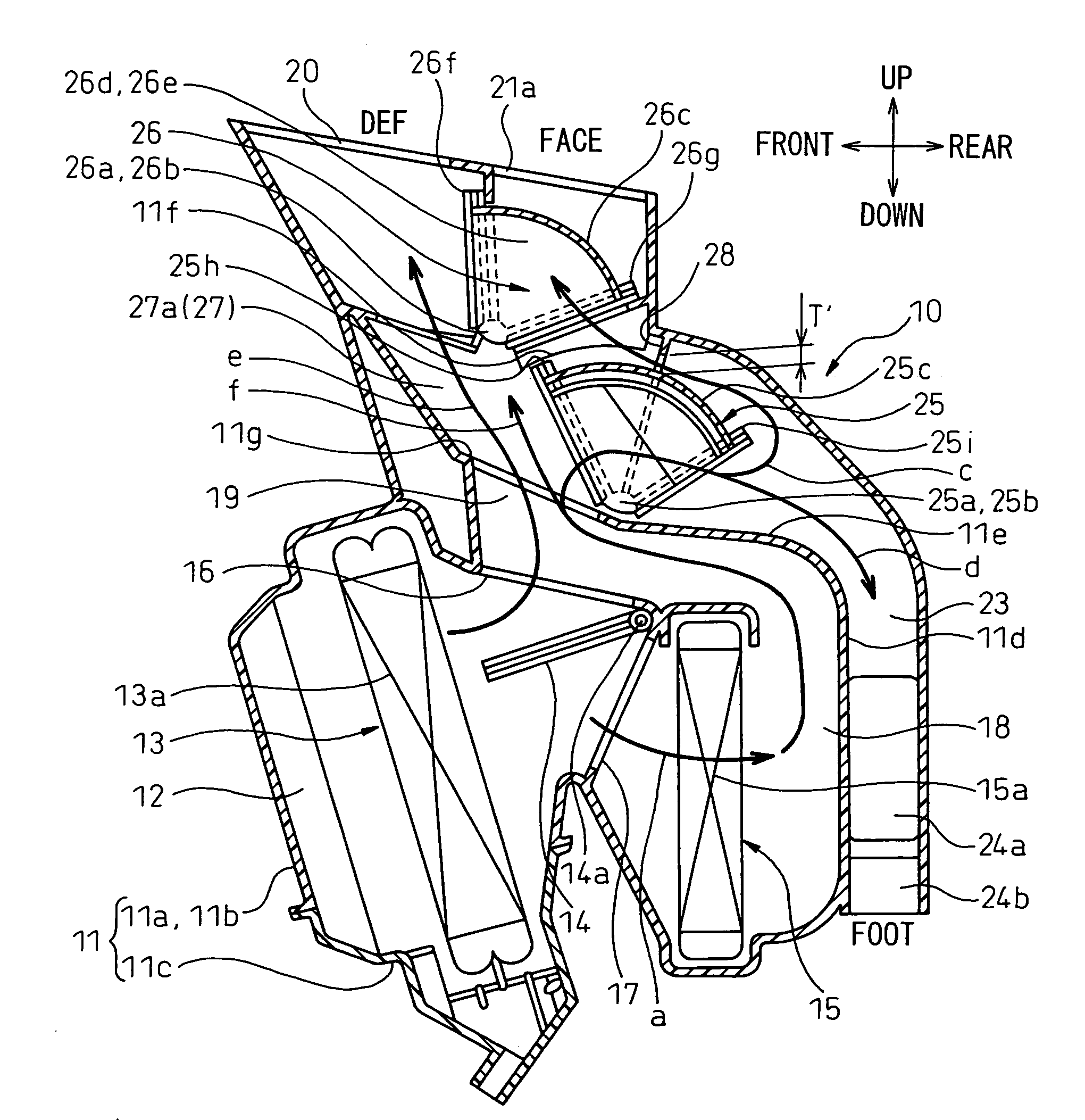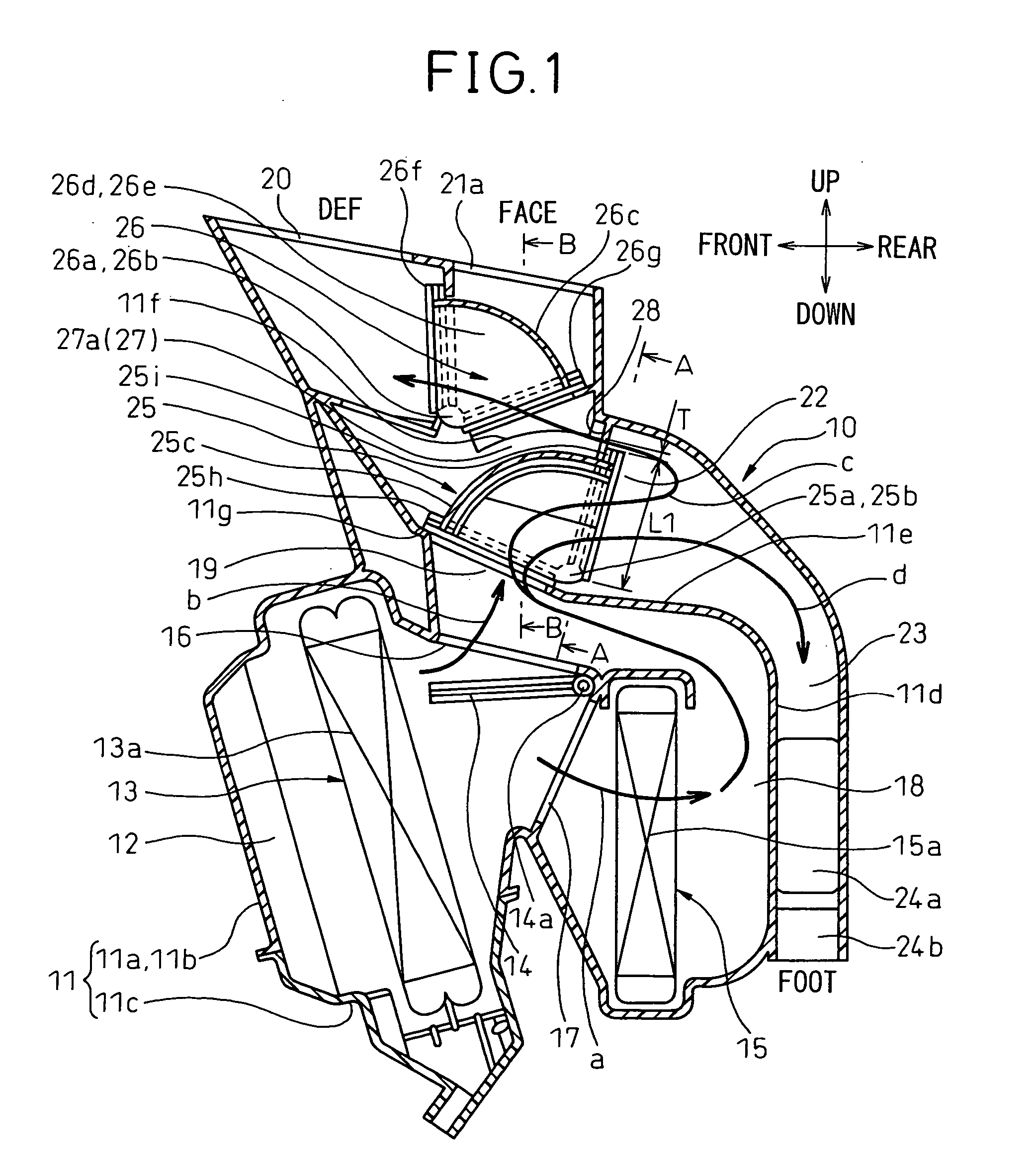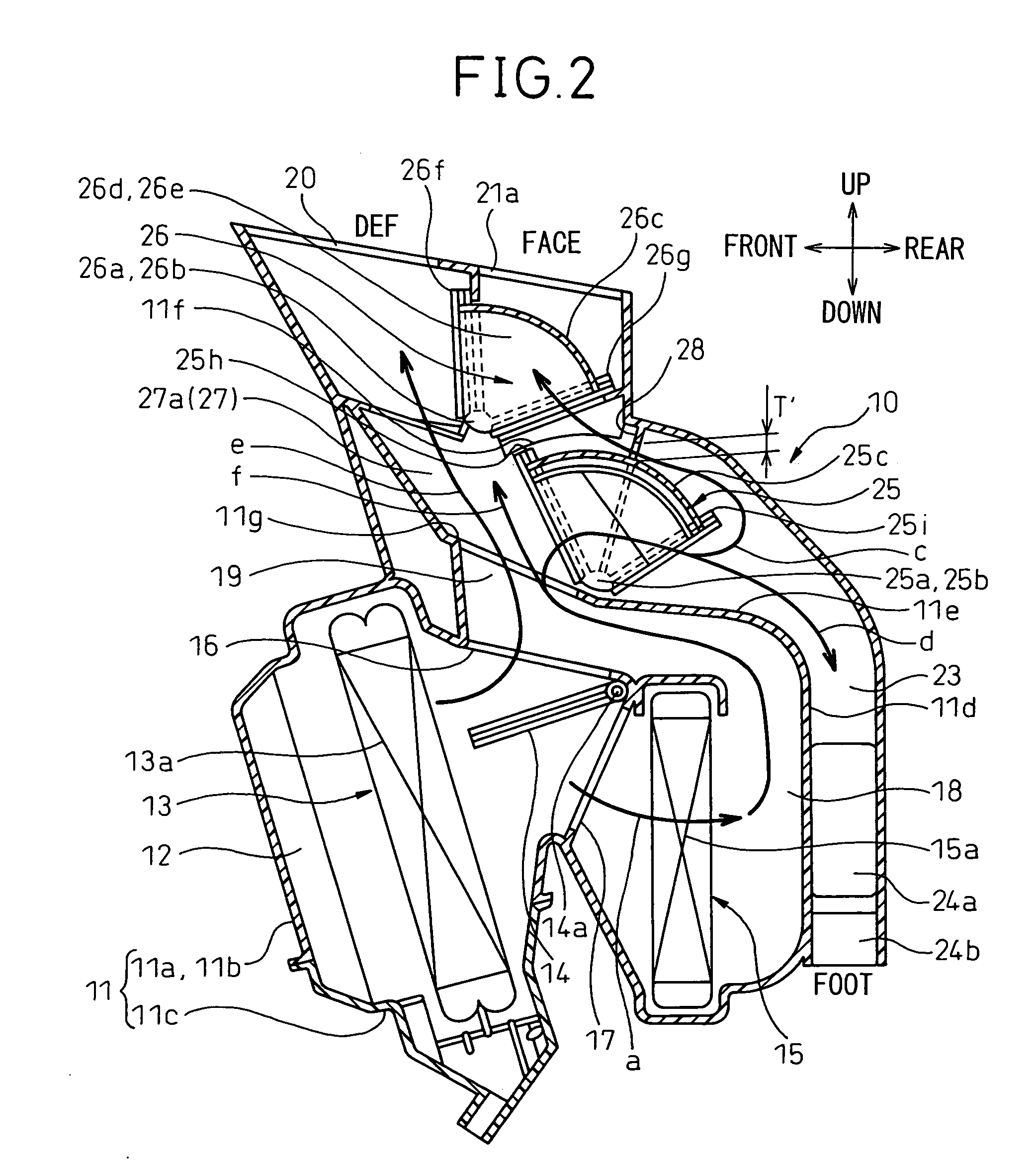Automotive air conditioning system
a technology for air conditioning systems and automobiles, which is applied in vehicle maintenance, vehicle cleaning, transportation and packaging, etc., can solve the problems of inconvenient deterioration of the comfort of the occupants, difficulty in maintaining an appropriate preset proportion,
- Summary
- Abstract
- Description
- Claims
- Application Information
AI Technical Summary
Benefits of technology
Problems solved by technology
Method used
Image
Examples
first embodiment
[0065] FIGS. 1 to 8 show a first embodiment of the invention. FIGS. 1 to 3 are longitudinal sectional views of an air-conditioning unit 10 accommodating a heat exchanger unit and constituting an inside unit of a air conditioning system for an automotive vehicle. FIG. 1 shows the operation in foot mode and FIG. 2 the operation in foot / defroster mode. FIG. 3 shows the operation in defroster mode constituting a blowout mode for closing up the foot opening.
[0066] The air-conditioning unit 10 is arranged inside the instrument panel (not shown) in the front compartment and substantially in the transversely (laterally) central portion of the vehicle. In FIGS. 1 to 3, the arrows indicating “up”, “down”, “front” and “rear” represent the directions as viewed from the air conditioning system mounted on the vehicle. The inside unit of the automotive air conditioning system roughly includes an air-conditioning unit 10 located substantially at the central portion and a blower unit, not shown, ar...
second embodiment
[0158]FIG. 9 shows the first rotary door 25 for the foot application according to a second embodiment. According to the second embodiment, the radius R of the central door surface 25c of the first rotary door 25 is kept constant over the whole circumferential area. Of the two seal units 25h, 25i of the first rotary door 25, therefore, the projection height D′ of the seal unit 25h of the end near to the defroster opening 20 is set larger than the projection height D of the seal unit 25i of the end near to the foot opening 22 (D′>D).
[0159] As a result, the maximum size L1, along the door diameter, of the end portion (end portion near to the vehicle rear end) near to the foot opening 22 is smaller than the maximum size L2, along the door diameter, of the end portion (end portion near to the vehicle front) of the defroster opening 20 (L12), where L1=R+D, L2=R+D′.
[0160] Also in the second embodiment, the gap T shown in FIGS. 1, 6 can be formed and can be closed in defroster mode, by se...
PUM
 Login to View More
Login to View More Abstract
Description
Claims
Application Information
 Login to View More
Login to View More - R&D
- Intellectual Property
- Life Sciences
- Materials
- Tech Scout
- Unparalleled Data Quality
- Higher Quality Content
- 60% Fewer Hallucinations
Browse by: Latest US Patents, China's latest patents, Technical Efficacy Thesaurus, Application Domain, Technology Topic, Popular Technical Reports.
© 2025 PatSnap. All rights reserved.Legal|Privacy policy|Modern Slavery Act Transparency Statement|Sitemap|About US| Contact US: help@patsnap.com



